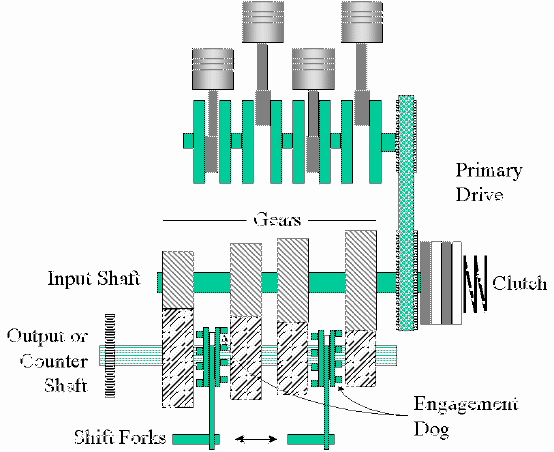To clutch or not to clutch?
Actually, in the case of shifting
your motorcycle’s transmission, that should be "de-clutch" or to
disengage the clutch between gear changes. As with such controversies
as oil, tires, helmet use and other deeply religious aspects of
motorcycle ownership, I leave these decisions up to the reader.
Instead, I’ll try to give a little insight into how your motorcycle’s
gearbox operates. Then you, as the informed consumer, can decide
what’s best for your application.

The typical modern motorcycle
gearbox or transmission is a "constant mesh" design. The name comes
from the fact that all of the gears in the transmission are in constant
engagement with one another. This differs from some older designs
where the gears slide back and forth on shafts, engaging one another
one pair at a time. The gears are arranged so that you have a drive
gear, coupled to the engine, and a driven gear coupled to the rear
wheel. They are arranged on shafts, the drive gear on the mainshaft
and the driven gear on the countershaft. In most cases, the mainshaft
is driven directly by the clutch, which in turn has one set of plates
connected to the engine and the other set connected to the mainshaft.
Most clutches are driven off the engine’s crankshaft by a gearset
as well. They may use direct gears or a chain or belt drive. This
is called the primary drive.
The countershaft drives the
transmission’s output device, typically a U-joint in the case of
shaft drive, or a countershaft sprocket if it’s chain or belt drive.
This is called the secondary drive.